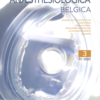Historical vignette – The Mapleson G, an original pediatric anesthesia circuit
Anesthesiology/instrumentation, pediatrics, pulmonary ventilation, Mapleson
Published online: Dec 03 2022
Abstract
A previously unpublished pediatric anesthesia circuit is presented here. It was invented and constructed by Dr Bernard-François Gribomont (hence called BFG circuit) around 1965 as a response to the important pediatric case load in the university hospital of Lovanium, near Leopoldville (now Kinshasa, DRC). The original objective was to find a simple solution that would enable the manual ventilation (assisted or controlled) of young children during ENT surgery, remaining very close to the child to reduce dead space while at the same time keeping far enough away from the surgeon in order to avoid obstructing their work.
It includes a short coaxial single piece circuit devoid of any mechanical valve connected to an in-line fresh gas ventilation bag; it does not fit into any existing Mapleson category. Hence, the authors propose to classify it in a new Mapleson G class. Its main advantages are conceptual simplicity, inherent safety, very low dead space accounting for minimal rebreathing and thus reduced fresh gas flow, small size and weight, and ease of use even during prolonged manual ventilation in small children. Its main drawback is difficult scavenging of expired gases. For logistical reasons it was abandoned in the nineties but could be of renewed interest in low-income countries.
